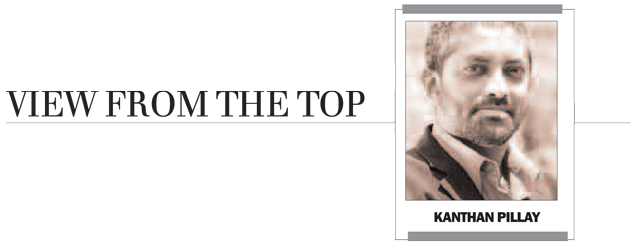
One man’s terrorist is another man’s freedom fighter. Our beloved first president who, 50 years ago on 16 December 1961, became the founding leader of Umkhonto we Sizwe is a prime example of this maxim.
For my part, I have been very clear about the distinction in my mind. When one deliberately targets unarmed civilians whether using the might of the state or attempting to overthrow that state, it is an act of terror.
It’s a difficult concept to explain to people on opposite sides of conflicts. This is largely due to what the professors who taught me social psychology called "actor-observer asymmetry".
Edward E Jones and Richard E Nisbett coined the phrase in 1971. They said “actors tend to attribute the causes of their behaviour to stimuli inherent in the situation, while observers tend to attribute behaviour to stable dispositions of the actor”.
(Translation: If others do it, it’s their fault; if I do it, it’s not my fault but it's because of the situation I'm in. By example: If you are late for work, in your boss’s mind it’s because you are lazy. If your boss is late for work, in his mind it’s the fault of the traffic. I think you get the picture.)
By now, unless you’ve been on a desert island, you would be aware of the events that took place in Connecticut in the USA last week.
In essence, a gunman first killed his mother at home, then drove to a school where he killed six adults and 20 young children before taking his own life.
There’s been a range of reaction to the calamity, nearly all of it emotional. For my part, I found myself spontaneously in tears reading the words of a six-year-old girl who lay among the bodies of her 15 classmates until she thought it was safe to leave: “Mommy, I'm OK but all my friends are dead.”
I expect that many emotional decisions will be taken in the US as a result.
For example, I expect that many schools will now introduce drastic security measures which in practice will not deter another similar attack but which will make life quite difficult for people generally. (Those of us who are dark-skinned and bearded who travel to the US on a regular basis know what this feels like.)
I also expect that there will be new pushes to ban the sale of automatic assault weapons to civilians.
This is not as simple as it may seem. In essence, the US is divided between those who believe the state should have the right to restrict the sale of firearms and those who do not.
I’m on the side of those who believe that one should have the right to buy assault weapons for the simple reason that I don’t trust the state – any state.
Remember that we have a track record in this country of police officers going berserk shooting their spouses and others and then themselves. If the only people allowed to own guns are those sanctioned by the state...
Note also that the US with a proliferation of legal weapons has a significantly smaller number of deaths by shooting than we do in this country.
So instead of joining the debate on what sort of laws need to be passed to prevent this stuff from happening, let me pose a question: What is the difference between a suicide bomber and a mass shooter?
There is an astonishingly high volume of research into the psychology of terrorists in general and suicide bombers in particular.
The first point that strikes me consistently is that many of them tend to be introverts between the ages of 18 to 24.
The second point is one made by Jeff Victoroff, from the Department of Neurology and Psychiatry at the University of Southern California School of Medicine in a paper titled The Mind of the Terrorist:
“Terrorism has surely existed since before the dawn of recorded history. Human nature has not changed. However, three interlocking trends have significantly changed the nature and degree of the threat: the globalisation of commerce, travel, and information transfer, which puts economic disparities and ideological competition in sharp relief and facilitates cooperative aggression by far-flung but like-minded conspirators; the ascent of religious fundamentalism as an aggrieved competitor with the market-economic, democratic, and secular trends of modernity; and the privatisation of weapons of mass destruction, putting the potential of macro-terrorist acts into the hands of small groups or even individuals.”
The third point is that while suicide bombers nominally enjoy the professed support of the communities they purport to serve, the percentage of people from those communities who actually become suicide bombers is small – comparable, I would venture, with the percentage of Americans who become mass shooters.
I’m not saying that I understand how to fix the problem of mass shootings. I do, however, see signs of actor-observer asymmetry on the part of the US which has not yet articulated to itself that terrorism is terrorism and that “our” terrorists are fundamentally no different to “their” terrorists.
The catch, of course, is that doing this will require them to realise that “our” people are really not that different to “their” people.
When they finally do, they will be able to look at real ways to combat this scourge.
